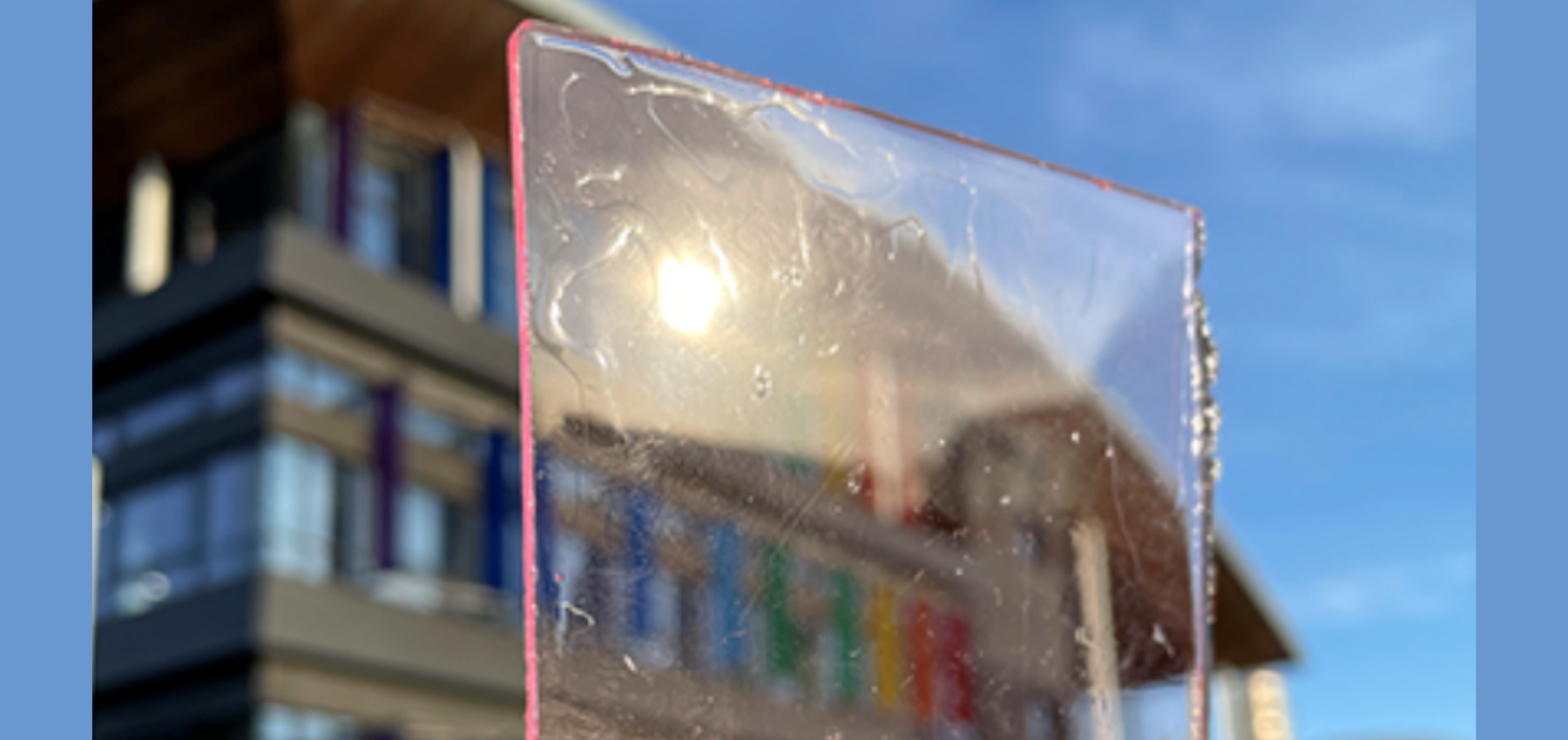Biography
Richard Friend’s research explores the electronic properties of novel semiconductors, currently carbon-based organic semiconductors and metal halide perovskites. We use these as the active component in range of semiconductor devices, including photovoltaic diodes, FETs, and LEDs, both to study their fundamental electronic structure and also to explore applications in display technologies and solar cells.
We have substantial facilities for the fabrication of thin film structures and active semiconductor devices, both using vacuum and solution-based processing methods. Besides our wide range of standard structural and optoelectronic characterisation techniques, we have a substantial investment in ultra-fast optical spectroscopy, with time resolution down to 10 femtoseconds, that we use to track the time evolution of photoexcitations.
Research
Molecular semiconductors
The electronic properties of organic molecular semiconductors are controlled by the relatively strong Coulomb interactions present, causing photoexcitations to form as strongly bound excited states, excitons, that show a large spin-exchange energy between higher energy spin singlet and lower energy spin triplet states. Triplet excitons are formed by electron-hole capture in both LEDs and in solar cells, and generally lead to non-radiative losses that limit device performance. Much of our current research is concerned with spin management, to explore new physics and to develop better engineered LED and solar cell device architectures.
For LEDs we are exploring methods to control the exchange energy using molecular structures that give charge-separated excited states with low exchange energies. For organic solar cells, we are developing new systems where we can control the spin-dependent kinetics for formation and dissociation of intermolecular electron-hole bound states. We have shown how this can prevent losses through triplet exciton formation and this may allow higher organic solar cell efficiencies, which though now beyond 20% are still limited by non-radiative decay channels.
A new approach to spin management that we have found is to use semiconductor molecules that have an unpaired spin in the ground state. These ‘spin radical’ materials can be designed to show very high luminescence efficiencies and we have found that we can operate efficient LEDs entirely within the spin doublet manifold. This work opens up a new range of molecular designs and possible novel spintronic control of optoelectronic behaviour that we are exploring in an ERC-funded project, SCORS. Our recent work has revealed new opportunities to couple spin doublet excitons to form high spin excitons that can be optically written and read (via efficient luminescence).
LEDs and lasers based on lead halide perovskites
Lead halide perovskites have recently been found to provide unexpectedly efficient thin-film solar cells. We have looked instead at their light-emitting properties and find that they can show remarkably efficient luminescence which we have explored in novel LED structures and in optically-pumped lasers. Our current research, supported by an EPSRC research grant, explores new quantum well structures that we assemble with perovskites with controlled bandgaps, using two-dimensional perovskites as larger energy gap components that we use to confine electronic excitations within lower gap three-dimensional perovskite regions.
Key publications
- “Near-infrared luminescent open-shell π-conjugated systems with a bright lowest-energy zwitterionic singlet excited state”, C. P. Yu, R. Chowdhury, Y. Fu, P. Ghosh, W. Zeng, T. B. E. Mustafa, J. Grüne, L. E. Walker, D. G. Congrave, X. W. Chua, P. Murto, A. Rao, H. Sirringhaus, F. Plasser, C. P. Grey, R. H. Friend, and H. Bronstein, Science Advances 10, eado3476 (2024) doi.org/doi:10.1126/sciadv.ado3476.
- “Fast Transfer of Triplet to Doublet Excitons from Organometallic Host to Organic Radical Semiconductors”, Q. Gu, S. Gorgon, A. S. Romanov, F. Li, R. H. Friend, and E. W. Evans, Advanced Materials 2402790 (2024) doi.org/10.1002/adma.202402790.
- “Decoupling excitons from high-frequency vibrations in organic molecules”, P. Ghosh, A. M. Alvertis, R. Chowdhury, P. Murto, A. J. Gillett, S. Dong, A. J. Sneyd, H.-H. Cho, E. W. Evans, B. Monserrat, F. Li, C. Schnedermann, H. Bronstein, R. H. Friend, and A. Rao, Nature 629, 355-362 (2024) doi.org/10.1038/s41586-024-07246-x.
- “Circularly polarised electroluminescence from chiral excitons in vacuum-sublimed supramolecular semiconductor thin films”, R. Chowdhury, M. D. Preuss, H.-H. Cho, J. J. P. Thompson, S. Sen, T. Baikie, P. Ghosh, Y. Boeije, X.-W. Chua, K.-W. Chang, E. Guo, J. van der Tol, B. W. L. van den Bersselaar, A. Taddeucci, N. Daub, D. M. Dekker, S. T. Keene, G. Vantomme, B. Ehrler, S. C. J. Meskers, A. Rao, B. Monserrat, E. W. Meijer, and R. H. Friend, Arxiv (2024) doi.org/10.48550/arXiv.2408.13905.
- “Optical read and write of spin states in organic diradicals”, R. Chowdhury, P. Murto, N. A. Panjwani, Y. Sun, P. Ghosh, Y. Boeije, V. Derkach, S.-J. Woo, O. Millington, D. G. Congrave, Y. Fu, T. B. E. Mustafa, M. Monteverde, J. Cerdá, J. Behrends, A. Rao, D. Beljonne, A. Chepelianskii, H. Bronstein, and R. H. Friend, Arxiv (2024) doi.org/10.48550/arXiv.2406.03365
- “Suppression of Dexter transfer by covalent encapsulation for efficient matrix-free narrowband deep blue hyperfluorescent OLEDs”, H. H. Cho, D. G. Congrave, A. J. Gillett, S. Montanaro, H. E. Francis, V. Riesgo-Gonzalez, J. Z. Ye, R. Chowdury, W. X. Zeng, M. K. Etherington, J. Royakkers, O. Millington, A. D. Bond, F. Plasser, J. M. Frost, C. P. Grey, A. K. Rao, R. H. Friend, N. C. Greenham, and H. Bronstein, Nature Materials 23 (2024) doi.org/10.1038/s41563-024-01812-4.
- “Efficient near-infrared organic light-emitting diodes with emission from spin doublet excitons”, H.-H. Cho, S. Gorgon, G. Londi, S. Giannini, C. Cho, P. Ghosh, C. Tonnelé, D. Casanova, Y. Olivier, T. K. Baikie, F. Li, D. Beljonne, N. C. Greenham, R. H. Friend, and E. W. Evans, Nature Photonics (2024) doi.org/10.1038/s41566-024-01458-3.
- “Charge transport in mixed metal halide perovskite semiconductors”, S. P. Senanayak, K. Dey, R. Shivanna, W. W. Li, D. Ghosh, Y. C. Zhang, B. Roose, S. J. Zelewski, Z. Andaji-Garmaroudi, W. Wood, N. Tiwale, J. L. MacManus-Driscoll, R. H. Friend, S. D. Stranks, and H. Sirringhaus, Nature Materials (2023) doi.org/10.1038/s41563-022-01448-2.
- “Mesitylated trityl radicals, a platform for doublet emission: symmetry breaking, charge-transfer states and conjugated polymers”, P. Murto, R. Chowdhury, S. Gorgon, E. Guo, W. Zeng, B. Li, Y. Sun, H. Francis, R. H. Friend, and H. Bronstein, Nature Communications 14, 4147 (2023) doi.org/10.1038/s41467-023-39834-2.
- “Reversible spin-optical interface in luminescent organic radicals”, S. Gorgon, K. Lv, J. Grüne, B. H. Drummond, W. K. Myers, G. Londi, G. Ricci, D. Valverde, C. Tonnelé, P. Murto, A. S. Romanov, D. Casanova, V. Dyakonov, A. Sperlich, D. Beljonne, Y. Olivier, F. Li, R. H. Friend, and E. W. Evans, Nature 620,538-544 (2023) doi.org/10.1038/s41586-023-06222-1.
- “Efficient and Bright Organic Radical Light-Emitting Diodes with Low Efficiency Roll-Off”, H. H. Cho, S. Gorgon, H. C. Hung, J. Y. Huang, Y. R. Wu, F. Li, N. C. Greenham, E. W. Evans, and R. H. Friend, Advanced Materials 35 (2023) doi.org/10.1002/adma.202303666.
- “Dielectric control of reverse intersystem crossing in thermally activated delayed fluorescence emitters”, A. J. Gillett, A. Pershin, R. Pandya, S. Feldmann, A. J. Sneyd, A. M. Alvertis, E. W. Evans, T. H. Thomas, L. S. Cui, B. H. Drummond, G. D. Scholes, Y. Olivier, A. Rao, R. H. Friend, and D. Beljonne, Nature Materials 21, 1150-+ (2022) doi.org/10.1038/s41563-022-01321-2.
- “Efficient energy transport in an organic semiconductor mediated by transient exciton delocalization”, A. J. Sneyd, T. Fukui, D. Palecek, S. Prodhan, I. Wagner, Y. F. Zhang, J. Sung, S. M. Collins, T. J. A. Slater, Z. Andaji-Garmaroudi, L. R. MacFarlane, J. D. Garcia-Hernandez, L. J. Wang, G. R. Whittell, J. M. Hodgkiss, K. Chen, D. Beljonne, I. Manners, R. H. Friend, and A. Rao, Science Advances 7 (2021) doi.org/10.1126/sciadv.abh4232.
- “The role of charge recombination to triplet excitons in organic solar cells”, A. J. Gillett, A. Privitera, R. Dilmurat, A. Karki, D. P. Qian, A. Pershin, G. Londi, W. K. Myers, J. Lee, J. Yuan, S. J. Ko, M. K. Riede, F. Gao, G. C. Bazan, A. Rao, T. Q. Nguyen, D. Beljonne, and R. H. Friend, Nature 597, 666-+ (2021) doi.org/10.1038/s41586-021-03840-5.
- “Understanding the luminescent nature of organic radicals for efficient doublet emitters and pure-red light-emitting diodes”, A. Abdurahman, T. J. H. Hele, Q. Y. Gu, J. B. Zhang, Q. M. Peng, M. Zhang, R. H. Friend, F. Li, and E. W. Evans, Nature Materials (2020) doi.org/10.1038/s41563-020-0705-9.
- “High stability and luminescence efficiency in donor–acceptor neutral radicals not following the Aufbau principle”, H. Guo, Q. Peng, X.-K. Chen, Q. Gu, S. Dong, E. W. Evans, A. J. Gillett, X. Ai, M. Zhang, D. Credgington, V. Coropceanu, R. H. Friend, J.-L. Brédas, and F. Li, Nature Materials (2019) doi.org/10.1038/s41563-019-0433-1.
- “Long-range exciton transport in conjugated polymer nanofibers prepared by seeded growth”, X.-H. Jin, M. B. Price, J. R. Finnegan, C. E. Boott, J. M. Richter, A. Rao, S. M. Menke, R. H. Friend, G. R. Whittell, and I. Manners, Science 360, 897 (2018) doi.org/10.1126/science.aar8104.
- “Efficient radical-based light-emitting diodes with doublet emission”, X. Ai, E. W. Evans, S. Dong, A. J. Gillett, H. Guo, Y. Chen, T. J. H. Hele, R. H. Friend, and F. Li, Nature 563, 540 (2018) doi.org/10.1038/s41586-018-0695-9.
Research supervision
I am currently looking to fill PhD and post-doctoral positions on current ERC and EPSRC grants

Contact Details
Affiliations
Fellow of St. John’s College
